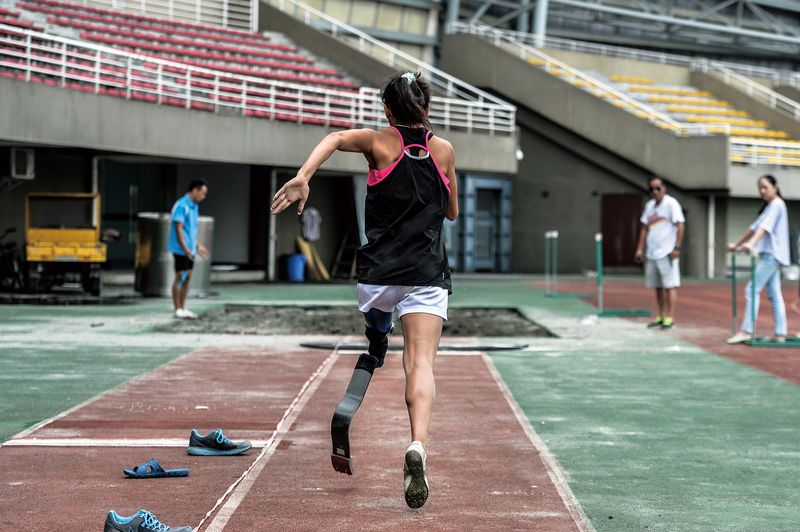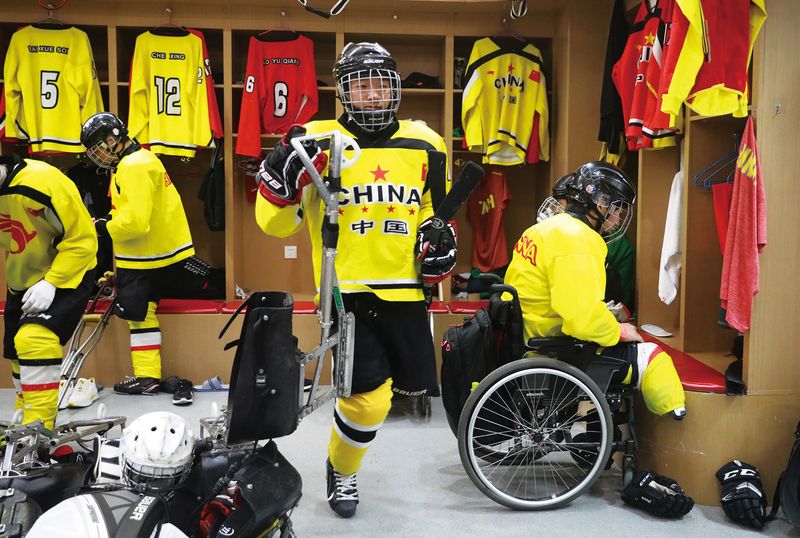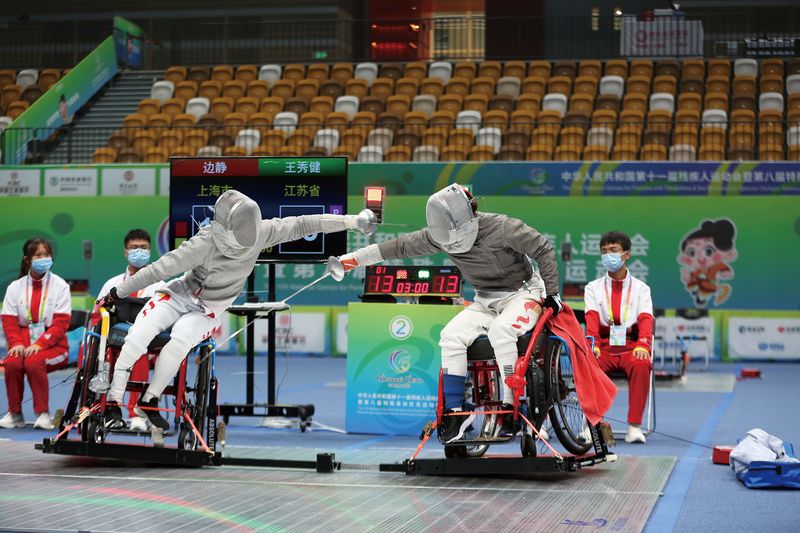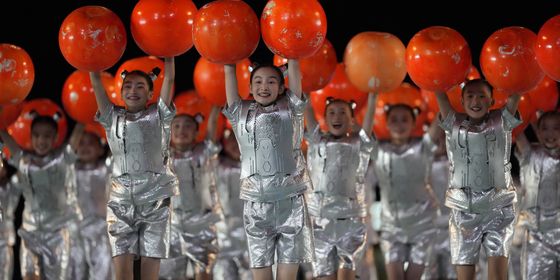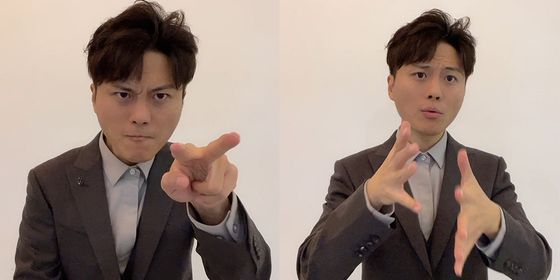Despite leading the world in sporting achievements, China’s para-athletes struggle for recognition and inclusion
Since November of last year, 31-year-old Zang Haorong has been working for his wife’s e-commerce business in the small city of Laixi, Shandong province, packing fruits and other agricultural products to send around the country, “I send out ten vans full of products each day; my hands are sore from sticking on the address tags,” he shared in his “Moments” feed on messaging app WeChat one day.
But far from complaining about this life, packing products is actually Zang’s “holiday”: Next spring, Zang, who is visually impaired, will return to the city of Qingdao to resume training in judo to compete in national and provincial games. Just ten days before his November Moments update, he won a silver medal in the men’s 100 kg competition at the 11th National Games for Persons with Disabilities in Xi’an, Shaanxi province, earning a new addition to his collection of over a dozen medals, and a reward of around 200,000 yuan from his local government in Shandong.
Though receiving just a fraction of the coverage of Olympic athletes, Chinese para-athletes’ performances have been nothing short of sensational since the country began participating in international competitions in 1984. It has topped the gold-medal table at every Paralympic Games since 2004, and obtained 96 gold medals at the Tokyo Games in 2021—over twice as many as the second-ranked country, Great Britain, which had 41. One of the gold medalists, 33-year-old swimmer Jia Hongguang, who competed with an arm amputation and won a men’s 100-meter backstroke event, was praised by officials in his hometown of Liaocheng, Shandong, for “winning honor for the city and the country,” and received prize money of 1.36 million yuan from the local government.
Yet as the medals and prize money piles up, China still faces an uphill battle in making parasports truly inclusive for the country’s estimated 2.7 million para-athletes, according to figures from the China Disabled Persons’ Federation (DPF) in 2011. “We have no shortage of Paralympic gold medals, but does society truly respect parasports?” Chen Guoqiang, professor from the Shanghai University of Sport, questioned in an op-ed in The Paper in June 2017, calling for better accommodation of people with disabilities in Chinese society and integration of para-athletes into competitions for able-bodied athletes.
Compared with the Olympic Games, the Paralympic Games receives far less attention. While air rifle athlete Yang Qian got over 530,000 fans on Weibo after she won China’s first gold medal at the Tokyo Olympics on July 24, and more than 3 million “likes” on one of her posts, news about the Tokyo Paralympics and Paralympians rarely got more than a few hundred likes and comments on the microblogging platform. Chinese search engine Baidu returns only 3 million results for the phrase “Tokyo Paralympic Games,” compared to 100 million for “Tokyo Olympic Games.”
China began to develop parasports in the 1980s, with the municipal Party committee and government of Tianjin and the Red Cross Society organizing the country’s first large-scale parasports event in October of 1983: a tournament for 200 visually impaired or amputee athletes from 13 provinces and provincial-level regions. A year later, the country held its first National Games for Persons with Disabilities (sometimes nicknamed “National Paralympics”). Since then, parasport competitions at national, provincial, and city levels have taken place every two-to-four years.
The government has also created laws and regulations to safeguard rights and access to sports of people with disabilities. The Law on the Protection of Disabled Persons, enacted in 1990, stipulates that the disabled “shall be assisted in access to cultural, sport, and recreational activities.” In 1995, the State Council, China’s top decision-making body, published the “Guidelines for All-People Fitness Plan” to facilitate sport activities for students at schools for people with visual, hearing, and psychological impairments, as well as fitness activities and competitive tournaments for people with physical and mental impairments.
Zhang Baofeng, a 54-year-old racing medalist at China’s Second National Paralympics in 1987, still remembers his excitement when he heard news of China’s First National Paralympics in 1983, three years after he lost both his arms due to an electric shock and dropped out of school. Just 15 years old at the time, Zhang confined himself mostly at home in Zhanghuolang village, Liaocheng, feeling hopeless as a “cripple (残废)”—then a common term for the disabled using the characters for “incomplete (残)” and “uselessness (废).”
“It made me feel there are platforms for people with disabilities to showcase their abilities too,” Zhang, now 54, tells TWOC over the phone, recalling the medals, media coverage, and para-athletes’ recognition by the public and government at the time. “It made me hopeful there was a path to a future for people with disabilities, that you’re not useless if you have a disability.”
Similarly, Zang says judo gave him the self-confidence and opportunity to venture out of his comfort zone. He had been born with a condition that caused his eyesight to decline progressively, and is completely unable to see in the dark. Zang learned judo at the age of 15 at the Qingdao School for the Blind, as a training partner for the women’s judo team the school established in 2005 to honor the upcoming Beijing Olympics.
Though the team was disbanded a couple of years later, and Zang was never able to receive regular training at school, he devised his own strength-training program on parallel bars, horizontal bars, and other apparatuses, as he lacked access to professional judo training facilities. Zang joined a local team in Qingdao in 2009, when the city began recruiting athletes for the 2010 Eighth Provincial Games for Persons with Disabilities, in which he won a gold medal in the men’s 100 kg judo event and qualified to enter the provincial team.
Three years later, he decided to become a full-time athlete. “The main reason was that the local Disabled Persons’ Federation (DPF) offered me a salary and paid social insurance for me [to be an athlete]. As [the DPF and the government] started to pay more attention to parasports...the subsidies and rewards also skyrocketed,” Zang explains.
Unlike able-bodied athletes on state-run teams, para-athletes are not guaranteed a regular salary. Generally, they’re offered free meals and accommodation, and some stipends during the months of training camps before major competitions, with the amount varying between locations. According to shooting athlete Lin Haiyan from Beijing, a gold medalist in a women’s 10-meter air pistol event at the Beijing Paralympic Games in 2008, the stipend was just 10 yuan per day at the time. It has now increased to 100 yuan per day.
Paralympic athletes also receive far less in prize money than their Olympic counterparts. In 1984, long-jump athlete Ping Yali got only 350 yuan for winning one gold and one silver medal in the Paralympic Games in New York, while Olympic 50-meter pistol champion Xu Haifeng received 9,000 yuan for his performance in Los Angeles that same year. Both were China’s first medalists in the Paralympics and Olympics, respectively, though only Xu is remembered in school textbooks.
It wasn’t until the 2008 Beijing Games that the national prize money for Paralympic and Olympic gold medalists both started at 500,000 yuan, according to Lin, though regional sports bodies have no such standards.
These are similar to trends worldwide: In Japan, gold-winning Paralympic athletes typically receive less prize money than their Olympic counterparts. Paralympians in Australia and Canada don’t get cash prizes for winning medals at all, according to Australian broadcaster SBS News, while Olympians do.
Adding to the financial pressure, para-athletes who have to work other jobs to support their training could risk losing their jobs if their employers do not grant them time off to attend the months-long training camps before major tournaments, Lin tells TWOC. Parasport teams, on the whole, report having less funding than teams in able-bodied sports, and often needing to rent and borrow training facilities. Athletes need to cover their own costs if they want extra training beyond what is offered by the state-run teams.
For these reasons, “professional” athletes like Zang are rare in Chinese parasports. Currently, Zang is the only full-time judo athlete on his provincial team of Shandong, a province that has produced a number of relatively high-profile para-athletes. His wife’s e-commerce business takes some pressure off the family, or else he might not have been able to choose a career in sports. “The provincial DPF will cherish you and let you stay in the sport only if you get good results in competitions. It’s kind of ‘survival of the fittest,’” Zang says.
This is one reason why Zang’s former teammate, Luo Wencong, chose to give up his athletic career to pursue a college degree. The 26-year-old from Linyi, Shandong, now a senior at Beijing Union University, tells TWOC he hated working with DPF officials, who “are keen to cash in on the sport, but don’t care much about athletes.” He implies there is corruption when it comes to officials’ decisions about how to distribute winnings and benefits from tournaments, but declines to provide further details on record.
Despite increasing rewards and subsidies, most parasport teams are facing difficulty recruiting young athletes. Lin, the 2008 Paralympic medalist, points out that benefits such as free room and board, stipends, and the (slim) chance to be offered a job or a civil servant’s position after retirement (the latter usually given only to top-performing Paralympians) are no longer attractive to young people as in the old days, especially as the government increases social benefits and subsidies to citizens with disabilities.
Zhang, who founded Liaocheng’s first para-swimming team in 2006, three years after his retirement from sports, has noticed the same trend in recent years while recruiting athletes in rural areas. “In the early 2000s, children with disabilities from poor families would choose sports as their path to a better life, so they were able to bear the hardship [of training],” he explains. Now, however, “well-off villagers are unwilling to send their children to practice sports, which is tiring and time-consuming.”
Some parents even think sports are cruel to people with disabilities, while athletes and people with disabilities chafe at the typical media narrative that holds up para-athletes as “inspiring,” when it pays attention to them at all, rather than simply celebrating their achievements.
Luo, the university student and former athlete, hopes one day such stereotypes can disappear. He tells TWOC, “Me practicing judo is nothing special. Everyone has a hobby, and mine is judo.”
Para-Prejudices: The Struggle for More Inclusive Sports is a story from our issue, “Sports for All.” To read the entire issue, become a subscriber and receive the full magazine.







